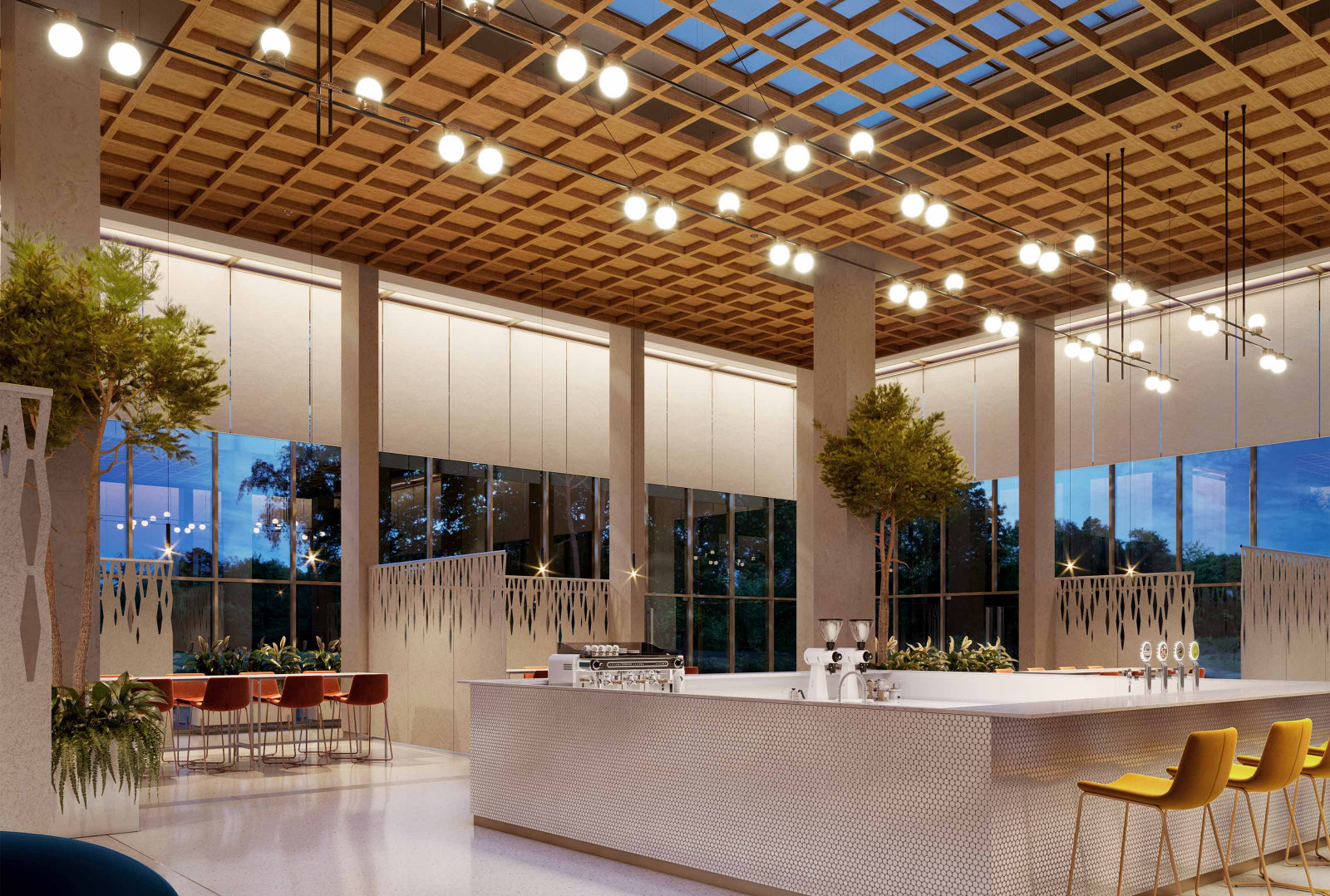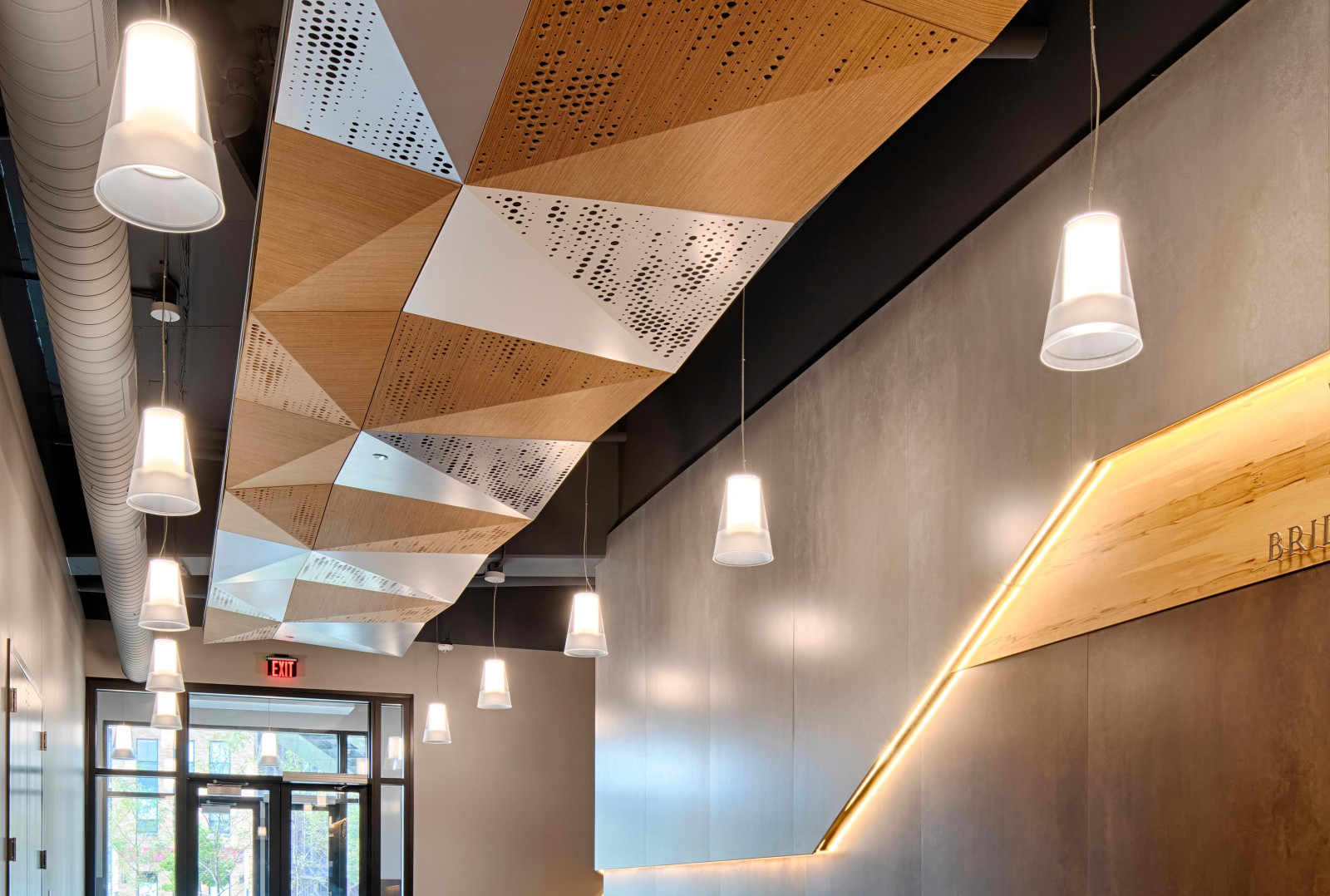Acoustic wood ceilings have become an essential feature in modern architecture and interior design. They not only enhance the visual appeal of a space but also provide excellent sound absorption and control. Whether you're designing a home theater, office space, or concert hall, an acoustic wood ceiling can significantly improve the overall acoustic performance of the room.
The demand for acoustic wood ceilings has grown exponentially over the years due to advancements in technology and material science. These ceilings are designed to reduce noise pollution, improve speech clarity, and create a more comfortable environment for occupants. By integrating wood with advanced acoustic materials, architects and designers can achieve both aesthetic and functional excellence.
As we explore this innovative solution, you'll learn about the benefits of acoustic wood ceilings, how they work, and the best practices for installation. Whether you're a homeowner, business owner, or professional in the construction industry, this article will provide valuable insights to help you make informed decisions.
Read also:Valley Air Pollution Control District The Key To Cleaner Skies
Table of Contents
- Introduction to Acoustic Wood Ceiling
- Benefits of Acoustic Wood Ceilings
- Types of Acoustic Wood Ceilings
- Design Considerations
- Installation Process
- Maintenance Tips
- Cost Analysis
- Sustainability and Eco-Friendly Options
- Case Studies
- Conclusion
Introduction to Acoustic Wood Ceiling
Acoustic wood ceilings are specially engineered to combine the natural beauty of wood with advanced acoustic properties. Unlike traditional ceilings, these systems are designed to absorb, reflect, or diffuse sound waves, creating a more balanced and pleasant auditory environment. The integration of wood with sound-absorbing materials makes them ideal for spaces where acoustics play a critical role, such as auditoriums, recording studios, and open-plan offices.
One of the key advantages of acoustic wood ceilings is their versatility. They come in various designs, finishes, and configurations, allowing architects and designers to tailor them to specific aesthetic and functional requirements. Additionally, these ceilings contribute to improved indoor air quality by reducing dust and allergens, making them a healthier choice for occupants.
Why Choose Acoustic Wood Ceilings?
- Enhanced sound quality
- Aesthetic appeal
- Durable and long-lasting
- Easy to maintain
Benefits of Acoustic Wood Ceilings
Acoustic wood ceilings offer numerous benefits that make them a popular choice for modern buildings. Below are some of the most significant advantages:
Improved Acoustic Performance
One of the primary functions of acoustic wood ceilings is to control sound. By absorbing excess noise and reducing reverberation, these ceilings create a more comfortable and functional environment. This is particularly important in spaces where clear communication is critical, such as classrooms, conference rooms, and healthcare facilities.
Enhanced Visual Appeal
Wood has a natural beauty that adds warmth and character to any space. Acoustic wood ceilings combine this aesthetic appeal with practical functionality, making them an attractive option for both residential and commercial projects. With a wide range of wood species, finishes, and patterns available, designers can achieve unique and personalized results.
Energy Efficiency
Acoustic wood ceilings can also contribute to energy savings by improving thermal insulation. Properly installed ceilings help regulate temperature fluctuations, reducing the need for heating and cooling systems. This not only lowers energy consumption but also reduces operational costs for building owners.
Read also:Anna Frozen Voice The Magic Behind Elsas Sister
Types of Acoustic Wood Ceilings
There are several types of acoustic wood ceilings available, each with its own set of features and benefits. Understanding the differences between these options can help you choose the right solution for your project:
Wood Plank Ceilings
Wood plank ceilings consist of individual wood panels that are installed in a modular fashion. These ceilings are easy to install and provide excellent sound absorption. They are ideal for spaces with high ceilings, such as lofts and industrial buildings.
Perforated Wood Ceilings
Perforated wood ceilings feature small holes or slits that allow sound waves to pass through and be absorbed by the underlying material. This design offers superior acoustic performance while maintaining the natural beauty of wood.
Wood Veneer Ceilings
Wood veneer ceilings use a thin layer of wood applied over a substrate, such as gypsum board or metal. This option is cost-effective and lightweight, making it suitable for large-scale projects.
Design Considerations
When designing an acoustic wood ceiling, several factors must be taken into account to ensure optimal performance and aesthetics:
Room Acoustics
The acoustical requirements of a space will dictate the type of ceiling system to be used. Factors such as room size, shape, and purpose should be carefully evaluated to determine the appropriate level of sound absorption needed.
Material Selection
Choosing the right wood species and finish is crucial for achieving the desired aesthetic and functional outcomes. Hardwoods like oak, maple, and walnut are popular choices due to their durability and attractive grain patterns.
Installation Techniques
Proper installation is essential for ensuring the effectiveness of acoustic wood ceilings. Techniques such as floating installations, suspended systems, and direct mounting should be considered based on the specific needs of the project.
Installation Process
The installation of acoustic wood ceilings involves several steps, each of which requires careful planning and execution:
Site Preparation
Before installation, the site must be prepared by ensuring that the ceiling surface is clean, level, and free of obstructions. Any necessary structural reinforcements should also be addressed at this stage.
System Assembly
The acoustic wood ceiling system is typically assembled off-site to ensure precision and quality control. Components such as wood panels, acoustic backing materials, and mounting hardware are pre-fabricated to facilitate efficient installation.
Final Installation
Once the system is assembled, it can be installed in the designated space. This process involves attaching the panels to the ceiling framework and ensuring proper alignment and spacing.
Maintenance Tips
To ensure the longevity and performance of acoustic wood ceilings, regular maintenance is essential. Below are some tips for keeping your ceiling in optimal condition:
- Dust the surface regularly with a soft cloth or brush
- Avoid using harsh chemicals or abrasive cleaners
- Inspect the ceiling periodically for signs of damage or wear
- Reapply finishes as needed to maintain the appearance of the wood
Cost Analysis
The cost of acoustic wood ceilings varies depending on factors such as material selection, design complexity, and installation requirements. On average, prices range from $10 to $50 per square foot. While this may seem higher than traditional ceiling options, the long-term benefits of improved acoustics and aesthetics often justify the investment.
Factors Affecting Cost
- Wood species and finish
- Size and complexity of the installation
- Acoustic material used
- Location and labor costs
Sustainability and Eco-Friendly Options
Many acoustic wood ceiling manufacturers are committed to sustainability by using responsibly sourced materials and eco-friendly production processes. Certifications such as FSC (Forest Stewardship Council) ensure that wood products come from well-managed forests, promoting environmental conservation.
Recycled Materials
Some acoustic wood ceilings incorporate recycled materials, reducing waste and minimizing environmental impact. These products offer a sustainable alternative without compromising on quality or performance.
Case Studies
Real-world examples demonstrate the effectiveness of acoustic wood ceilings in various applications:
Case Study 1: Concert Hall
A renowned concert hall in Europe recently installed acoustic wood ceilings to enhance the listening experience for audiences. The system reduced reverberation times by 30%, resulting in clearer sound quality and improved audience satisfaction.
Case Study 2: Office Building
An open-plan office building in North America adopted acoustic wood ceilings to address noise complaints from employees. The installation led to a 40% reduction in background noise, improving productivity and overall well-being.
Conclusion
Acoustic wood ceilings represent a cutting-edge solution for modern architecture and interior design. By combining the natural beauty of wood with advanced acoustic properties, these systems offer unparalleled performance and aesthetics. Whether you're looking to enhance sound quality, improve energy efficiency, or create a more sustainable environment, acoustic wood ceilings are a worthwhile investment.
We encourage you to explore the options available and consult with professionals to find the best solution for your needs. Share your thoughts and experiences in the comments below, and don't forget to check out our other articles for more insights into the world of design and construction!
Data Source: Environmental Protection Agency, Forest Stewardship Council, and industry reports.


